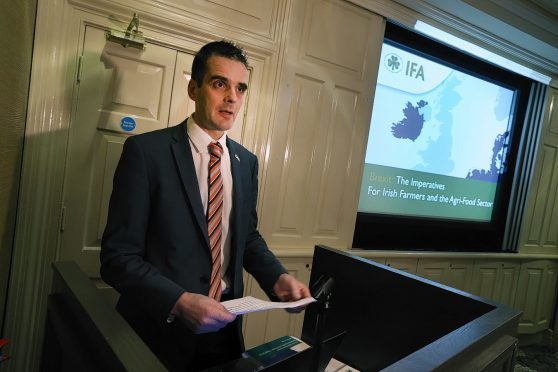The chief of Ireland’s farmers’ union has warned that the livelihoods of Irish farming families are at risk from Brexit.
Speaking at a major Brexit conference in Dublin, Irish Farmers’ Association (IFA) president Joe Healy said there was a huge responsibility on Irish, EU and UK politicians to get Brexit negotiations right.
The conference , which was organised by the IFA, was attended by more than 800 farmers and leading politicians including EU farm commissioner Phil Hogan and Irish farm minister Michael Creed.
“The livelihoods of thousands of farm families and the future of the agriculture and food industry are at stake in Brexit negotiations,” said Mr Healy.
“The implications of Brexit for Ireland are clear – and they are stark. Ireland is the most exposed EU Member State, and with 40%, or 4billion euros of our agri-food exports going to the UK each year, agriculture is the most exposed sector.”
Mr Healy said the IFA had identified three key priorities for Irish agriculture in Brexit negotiations – for the UK and the EU to maintain the closest possible trading relationship; for the value of the UK market to be maintained; and for a continuation of a fully-funded Common Agricultural Policy (Cap).
“The value of our exports cannot be undermined by an increase in low cost food imports into the UK market or by imports that do not meet the high food safety, animal welfare, health and environmental standards that are required of EU producers,” added Mr Healy.










